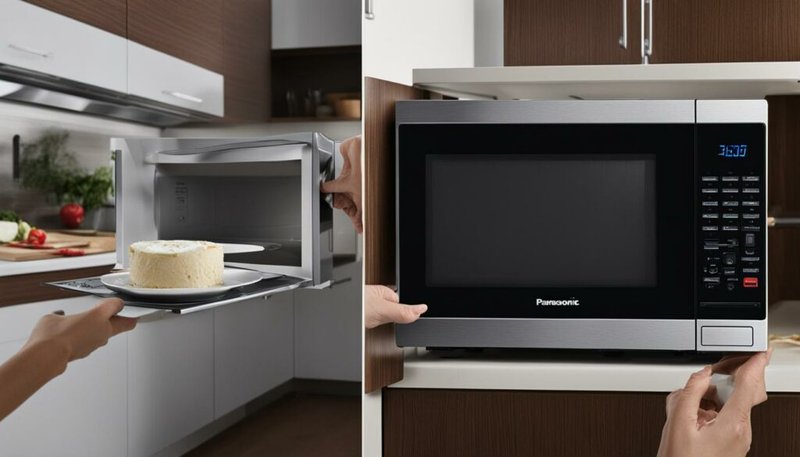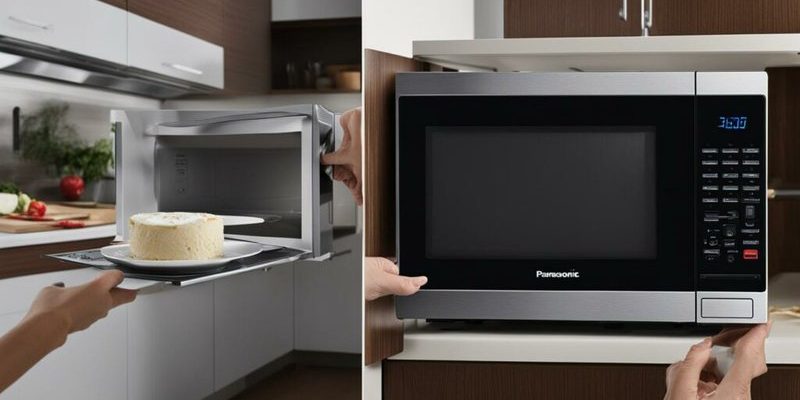
The “SE” error can stem from a few different culprits. Think of it like a car’s check engine light; it doesn’t pinpoint the exact issue but signals that something needs attention. It could be as simple as moisture or dirt on the keypad or a bit more complex like a faulty control board. Before you rush to call a repair technician or think about a replacement, let’s explore some straightforward steps to reset your microwave and potentially save yourself some time and money.
Understanding the “SE” Error Code
So what exactly does the “SE” error mean? In a nutshell, this error code signals issues with the microwave’s keypad or control board. Imagine your microwave’s control panel as a friendly gatekeeper. When it functions correctly, it ensures that your buttons communicate effectively with the rest of the device. But sometimes, this gatekeeper runs into trouble, usually due to simple things like moisture, dirt, or even internal faults.
You might be asking, how does moisture cause such a fuss? Well, if you think about it, the kitchen is a humid place, especially when you are cooking or boiling water nearby. Steam can seep into tiny crevices and interfere with electrical connections on the keypad. It’s like wearing wet socks; everything just feels off and doesn’t function right. Additionally, the presence of dirt or residue from cooking can lead to faulty button responses. It’s like typing on a sticky keyboard—not very pleasant and definitely not effective.
The good news is that not all hope is lost if you see this error. It doesn’t necessarily mean your microwave is ready for the scrapyard. Understanding the cause is half the battle, and it allows us to move forward to the solutions.
Attempting a Soft Reset
The first line of defense against the pesky “SE” error is a soft reset. Think of this as the equivalent of turning your computer off and on again. It’s a simple approach that can sometimes work wonders. To start, you’ll want to unplug your microwave from the power source. This isn’t just a matter of clicking a switch—actually pull the plug from the wall. It’s like taking a deep breath; it allows the microwave to clear its memory and reset its internal settings.
Once you’ve unplugged it, wait for a good three to five minutes. Patience is key here. This short wait allows any residual power to dissipate, ensuring a clean reset. After your wait is up, plug the microwave back in. Now, you might be tempted to immediately start pressing buttons, but before you do, take a moment to see if the error code has disappeared. Sometimes, that’s all it takes to get things back on track.
If the error persists, don’t despair. A soft reset doesn’t always do the trick, especially if there’s a more profound underlying issue. But it’s a step worth trying, and it often resolves minor glitches. If the code is still flashing in your face, it may be time to roll up your sleeves and dive a bit deeper.
Inspecting and Cleaning the Keypad
If a soft reset hasn’t cleared the error, it’s time to get hands-on. Here’s a bit of advice: examine your microwave’s keypad closely. Remember the analogy of the sticky keyboard? It’s time to clean up. Dust, grease, and even moisture lodged between the buttons can confuse the system.
Start by disconnecting the power once again—safety first! Using a soft cloth slightly dampened with warm, soapy water, gently clean the surface of the keypad. Avoid getting water into the seams. It’s a bit like cleaning a touchscreen phone; you want it wet enough to lift the dirt but not so much that you risk damaging the electronics.
After cleaning, let the keypad dry completely before plugging in the microwave again. This drying phase is crucial; any remaining moisture can defeat the purpose of cleaning in the first place. Once dry, reconnect the microwave and check to see if the error has vanished.
Still seeing that annoying SE code? If so, it might indicate more serious problems with the keypad or control board itself. Let’s head to the next course of action if this doesn’t pan out.
Consulting the Manual and Seeking Professional Help
When home remedies don’t work, your Panasonic microwave’s manual can be a goldmine of information. It’s like having a map when you’re lost—there’s usually a troubleshooting section that gives you additional tips tailored specifically for your model. The manual might suggest further steps or at least guide you on whether a professional repair is necessary.
If resetting and cleaning haven’t resolved the SE error, getting professional help could be the logical next step. Sometimes the issue could be a faulty control board or wiring that needs expert eyes. Think of it like needing a mechanic for a car problem you can’t fix on your driveway. It’s better to rely on those who are equipped to handle intricate repairs than risk causing more damage.
Be sure to pick an authorized Panasonic service center. They’ll have the right tools and expertise to replace any faulty parts with genuine parts. Doing so not only fixes the issue but also ensures your microwave remains in warranty and functions safely.
Preventative Measures and Final Thoughts
It’s always nice to avoid problems before they start. To keep that SE code at bay, consider some simple preventative measures. Position your microwave in a well-ventilated area away from direct sources of steam. Continuous exposure to steam increases the chance of moisture seeping into sensitive areas. It’s like keeping sensitive documents away from water spills—common sense goes a long way.
Also, make it a routine to clean your keypad regularly. A quick wipe-down after cooking can prevent grime from building up. And remember, quick cleaning is much easier (and cheaper) than dealing with a persistent error code threatening your dinner plans.
In conclusion, while the SE error seems daunting, it’s mostly a cry for some TLC from your trusty kitchen appliance. Through simple resets and regular maintenance, you can keep your Panasonic microwave running smoothly for years. If it makes you pause your culinary creativity, these steps will help put you back on track in no time.
